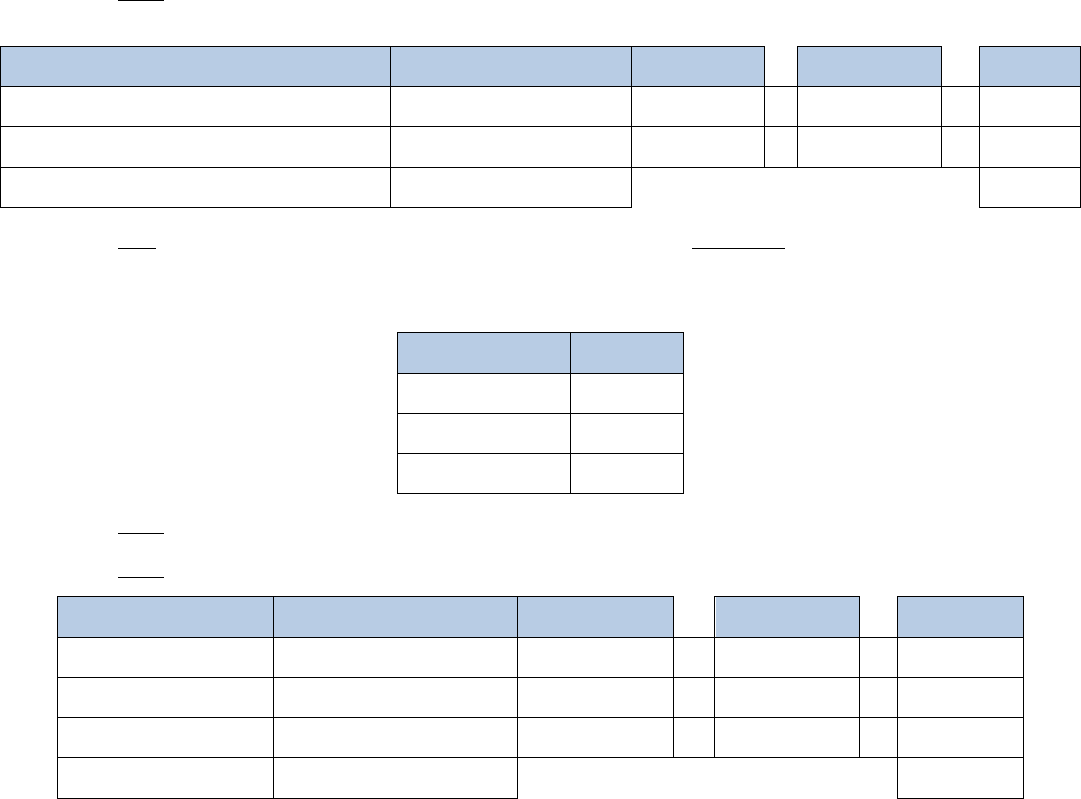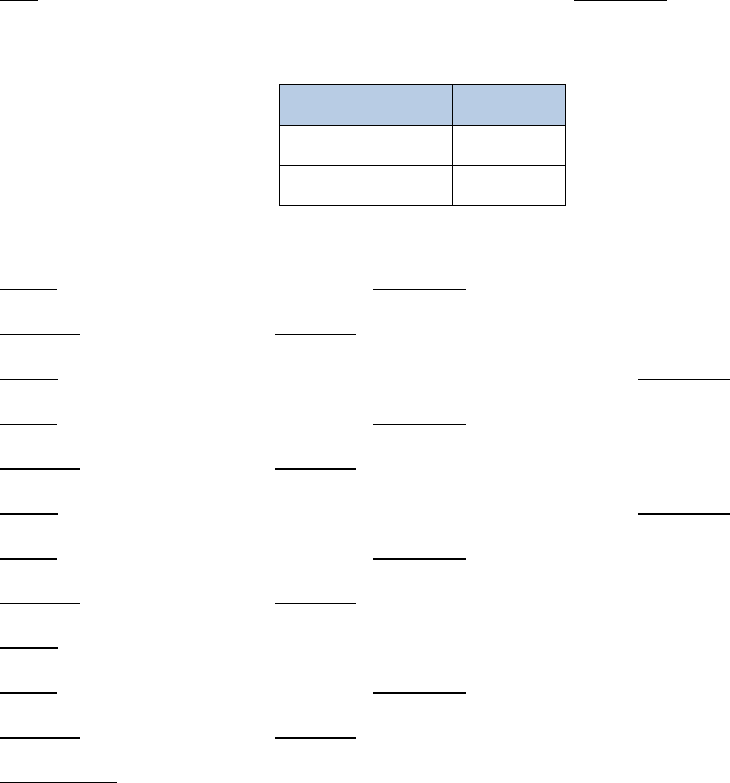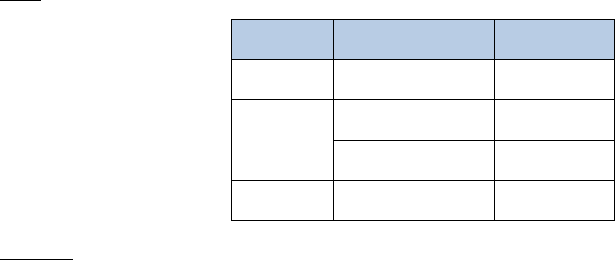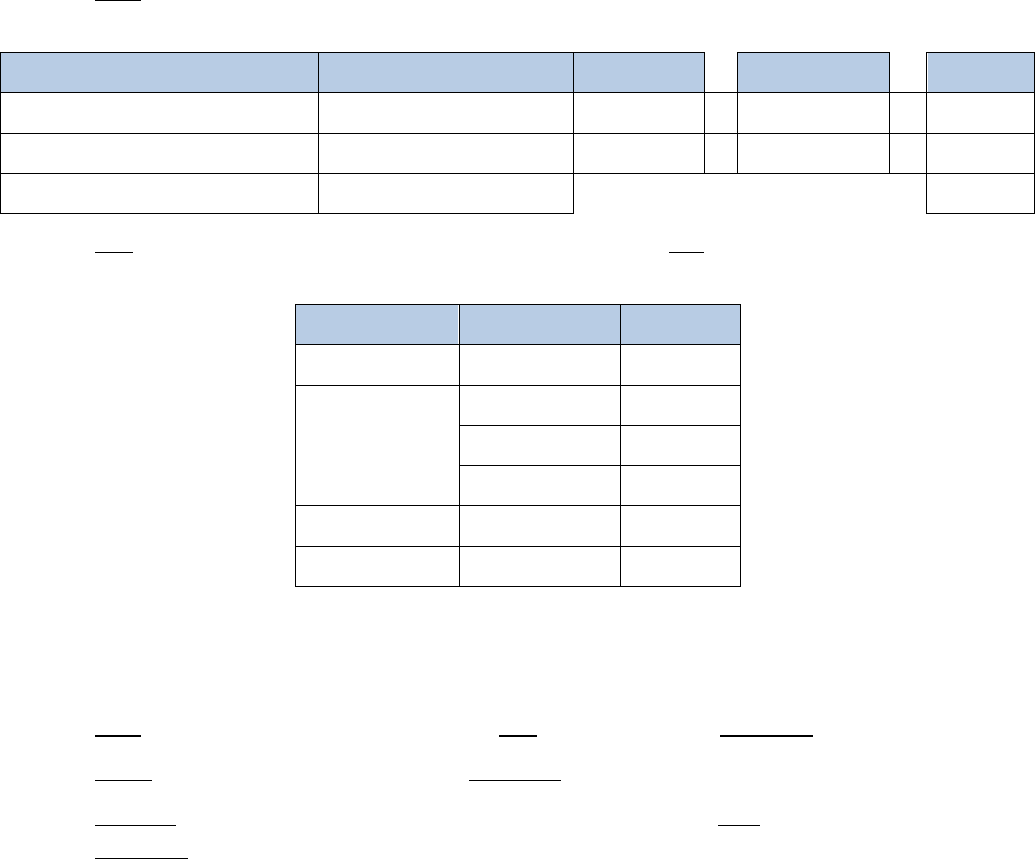
Arima-HiC Kit
User Guide for Library Prep using KAPA
Ò
Hyper Prep Kit
Doc A160139 v00
1
User Guide
Arima-HiC Kit
Library Preparation using KAPA
Ò
Hyper Prep Kit
Material Part Number:
A510008
Document Part Number:
A160139 v00
Release Date:
November 2018
Arima-HiC Kit
User Guide for Library Prep using KAPA
Ò
Hyper Prep Kit
Doc A160139 v00
2
This product is intended for research use only. This product is not intended for diagnostic purposes.
This document and its contents are proprietary to Arima Genomics, Inc (“Arima Genomics”). Use of this
document is intended solely for Arima Genomics customers for use with the Arima-HiC Kit, PN A510008, and
for no other purpose. This document and its contents shall not be used, distributed or reproduced in whole
or in part and/or otherwise communicated or disclosed without the prior written consent of Arima Genomics.
This user manual must be read in advance of using the product and strictly followed by qualified and properly
trained personnel to ensure proper use of the Arima-HiC kit. Failure to do so may result in damage to the
product, injury to persons, and/or damage to other property. Arima Genomics does not assume any liability
resulting from improper use of its products or others referenced herein.
U.S. Patent No. US 9,434,985 pertains to the use of this product.
TRADEMARKS
AMPure
Ò
is a trademark of Beckman Coulter, Inc.
KAPA
Ò
is a trademark of Roche Molecular Systems, Inc.
Covaris
Ò
is a trademark of Covaris, Inc.
Diagenode
Ò
is a trademark of Diagenode S.A.
Illumina
Ò
and TruSeq
Ò
are trademarks of Illumina, Inc.
Bioanalyzer
Ò
and TapeStation
Ò
are trademarks of Agilent Technologies, Inc.
Qubit
Ò
is a trademark of Molecular Probes, Inc.
©
2018, Arima Genomics, Inc. All rights reserved.

Arima-HiC Kit
User Guide for Library Prep using KAPA
Ò
Hyper Prep Kit
Doc A160139 v00
3
Revision History
Document
Date
Description of Change
Material Part Number:
A510008
Document Part Number:
A160139 v00
November
2018
Initial Release
Arima-HiC Kit
User Guide for Library Prep using KAPA
Ò
Hyper Prep Kit
Doc A160139 v00
4
Table of Contents
Getting Started ..................................................................................................................................... 5
Library Preparation ...........................................................................................................................6-10
Arima-QC2 Quality Control ............................................................................................................11-12
Library Amplification ......................................................................................................................13-14
Warranty and Contact Info .................................................................................................................. 15

Arima-HiC Kit
User Guide for Library Prep using KAPA
Ò
Hyper Prep Kit
Doc A160139 v00
5
Getting Started
1.1 Kit Contents and Storage
• The Arima-HiC Kit contains the following reagents to be used during Library Preparation:
Kit Location
Reagent
Storage Temperature
Box A
Wash Buffer
Elution Buffer
RT
Box C
Enrichment Beads
2 to 8°C
1.2 Handling and Preparation
• The majority of required reagents for the Library Preparation protocol are included in the
KAPA
Ò
Hyper Prep kit. Other required reagents are either supplied in the Arima-HiC kit,
or, listed below in Section 1.3.
• Safe stopping points are indicated where the option is available.
• The
Enrichment Beads
should be thoroughly mixed by pipetting or vortexing until
homogeneous directly before use.
• The
Wash Buffer
and
Elution Buffer
should be kept at room temperature during handling
and preparation.
!
1.3 User-supplied reagents, consumables and equipment checklist
Kapa
Ò
Hyper Prep Kit with Library Amplification Module (e.g. Cat # KK8500, KK8502, or
KK8504)
KAPA
Ò
Library Quantification Kit for Illumina
Ò
Platforms (e.g. KAPA
Ò
Cat # KK4824)
15µM Illumina
Ò
TruSeq
Ò
sequencing adapters (e.g. Illumina
Ò
Cat # 20020590)
DNA Purification Beads (e.g. Beckman Coulter Cat # A63880)
Qubit
Ò
Fluorometer, dsDNA HS Assay Kit and required consumables (e.g. Thermo Fisher
Scientific Cat # 32851, 32856)
Freshly prepared 80% Ethanol
1.7mL microcentrifuge tubes, PCR tubes or PCR plates
Magnetic rack for 1.7mL microcentrifuge tubes, PCR tubes or PCR plates!
Instrument for DNA Fragmentation (e.g. Covaris
Ò
or Diagenode
Ò
) and consumables.!
Thermal cycler
Thermomixer (if doing some steps in 1.7mL microcentrifuge tubes)
Gel Electrophoresis System (e.g. Bioanalyzer
Ò
, TapeStation
Ò
, etc.)

Arima-HiC Kit
User Guide for Library Prep using KAPA
Ò
Hyper Prep Kit
Doc A160139 v00
6
Library Preparation
Input:
Proximally-ligated DNA
Output:
Bead-bound Arima-HiC library
Overview:
Library preparation begins with DNA fragmentation (Section 2.1), DNA size
selection (Section 2.2), and biotin enrichment (Section 2.3). Afterwards, KAPA
Ò
Hyper Prep
reagents are used in a custom end-repair, dA-tailing and adapter ligation protocol (Section
2.4). This custom protocol contains specific modifications to the standard KAPA
Ò
Hyper Prep
protocol that must be performed. All buffers and enzymes provided by the KAPA
Ò
Hyper Prep
kit are used, and most additional required reagents are provided in the Arima-HiC kit. This
custom Library Preparation protocol constructs libraries while DNA is bound to the
Enrichment Beads
. After the Library Preparation protocol, there is a recommended Arima-
QC2 Quality Control checkpoint. The final step is PCR amplification of the bead-bound Arima-
HiC library using KAPA
Ò
library amplification reagents, producing the final sequence-ready
Arima-HiC library.
2.1 DNA Fragmentation
Before you begin:
The output of the Arima-HiC Protocol is large proximally-ligated DNA
molecules. These large DNA molecules must be fragmented using mechanical methods to
limit sequence bias, and then prepared as a sequencing library that is compatible with
Illumina
Ò
sequencing instruments. Covaris
Ò
instruments are recommended for mechanical
fragmentation of DNA, although Diagenode
Ò
instruments have also been tested and yield
comparable results. DNA should be fragmented in 100µL of
Elution Buffer
. Some Covaris
Ò
protocols recommend DNA fragmentation in 130µL, but 100µL must be used for DNA
fragmentation in the Arima-HiC library preparation protocol. It is recommended to fragment
at least 750ng of DNA per sample, or up to 5µg (depending on the DNA fragmentation
instrument manufacturer recommendations). For certain applications, less than 750ng of DNA
could be used.
1. If necessary, add
Elution Buffer
to bring the sample volume to 100µL. Do not exceed
100µL of volume for DNA fragmentation.
2. Fragment DNA to obtain an average fragment size of 400bp. Please use the DNA
fragmentation instrument manufacturer default settings for obtaining a target fragment
size of 400bp. For example, Covaris
Ò
publishes optimal DNA fragmentation Power, Duty
Factor, Cycles per Burst, and Time for obtaining a target fragment size of 400bp.
3. Samples may be stored at -20°C for up to 3 days.
Recommended QC before proceeding:
Run an aliquot of fragmented DNA on a gel
electrophoresis system (e.g. Bioanalyzer
Ò
, TapeStation
Ò
) to confirm an appropriate fragment
size distribution centered around 400bp.

Arima-HiC Kit
User Guide for Library Prep using KAPA
Ò
Hyper Prep Kit
Doc A160139 v00
7
2.2 DNA Size Selection
Before you begin:
Fragmented DNA must be size-selected to have a size distribution between
200 – 600bp. This workflow can be performed in microfuge tubes as well as most PCR tubes
and PCR plates. Ensure that your tubes or plates can hold up to 200µL of sample volume.
Also ensure that you have a magnetic rack that fits your choice of sample tube/plate.
Note: DNA Purification Beads (e.g. AMPure
Ò
XP Beads) should be warmed to RT and
thoroughly mixed before use. The DNA Purification Beads are a user-supplied reagent and
should not be mistaken for the Enrichment Beads or QC Beads provided in the Arima-HiC kit.
For the ethanol washes performed below, use sufficient 80% ethanol to fully submerge the
magnetized beads.
1. Transfer fragmented DNA sample from fragmentation tube to either a microfuge tube,
PCR tube, or PCR plate. If necessary, add
Elution Buffer
to bring sample volume to 100µL.
2. Add 60µL of
DNA Purification Beads
, mix thoroughly by pipetting, and incubate at RT for
5 min.
3. Place sample against magnet, and incubate until solution is clear.
4. Transfer ~160uL of supernatant to a new sample tube or well of a PCR plate. Discard
beads.
5. Add 40µL of
DNA Purification Beads
to the ~160µL of supernatant, mix thoroughly by
pipetting, and incubate at RT for 5 min.
6. Place sample against magnet, and incubate until solution is clear.
7. Discard supernatant. While sample is still against magnet, add 200µL of
80% ethanol
, and
incubate at RT for 1 min.
8. Discard supernatant. While sample is still against magnet, add 200µL of
80% ethanol
, and
incubate at RT for 1 min.
9. Discard supernatant. While sample is still against magnet, incubate beads at RT for 3 – 5
min. to air-dry the beads.
10. Remove the sample from magnet, resuspend beads in 100µL of
Elution Buffer
, and
incubate at RT for 5 min.
11. Place sample against magnet, incubate until solution is clear, and transfer supernatant to
a new sample tube or well of a PCR plate.
12. Quantify sample using Qubit
Ò
.
13. Samples may be stored at -20°C for up to 3 days.

Arima-HiC Kit
User Guide for Library Prep using KAPA
Ò
Hyper Prep Kit
Doc A160139 v00
8
2.3 Biotin Enrichment
Before you begin:
This workflow can be performed in microfuge tubes as well as most PCR
tubes and PCR plates. Ensure that your tubes or plates can hold up to 200µL of sample
volume. Also ensure that you have a magnetic rack that fits your choice of sample tube/plate.
Set your thermal device (thermal cycler or thermomixer) to hold at 55°C.
1. Transfer
125ng – 2µg*
of size-selected DNA into a new microfuge tube, PCR tube, or well
of a PCR plate. If necessary, add
Elution Buffer
to bring sample volume to 100µL.
* Biotin enrichment and subsequent library preparation has been optimized to deliver peak
performance for DNA inputs ranging from 125ng-2µg. While input amounts closer to 2µg will
result in more complex Arima-HiC libraries, 125ng of input has been shown to build libraries
with sufficient complexity for 600M read-pairs of sequence data.
2. Add 100µL of
Enrichment Beads
, mix thoroughly by pipetting, and incubate at RT for 15
min.
3. Place sample against magnet, and incubate until solution is clear.
4. Discard supernatant, and remove sample from magnet.
5. Wash beads by resuspending in 200µL of
Wash Buffer
, and incubate at 55°C for 2 min.
6. Place sample against magnet, and incubate until solution is clear.
7. Discard supernatant, and remove sample from magnet.
8. Wash beads by resuspending in 200µL of
Wash Buffer
, and incubate at 55°C for 2 min.
9. Place sample against magnet, and incubate until solution is clear.
10. Discard supernatant, and remove sample from magnet.
11. Wash beads by resuspending in 100µL of
Elution Buffer
.
12. Place sample against magnet, and incubate until solution is clear.
13. Discard supernatant, and remove sample from magnet.
14. Resuspend beads in 50µL of
Elution Buffer
.

Arima-HiC Kit
User Guide for Library Prep using KAPA
Ò
Hyper Prep Kit
Doc A160139 v00
9
2.4 End Repair, dA-tailing, and Adapter Ligation
Before you begin
: This custom protocol resembles the standard KAPA
Ò
Hyper Prep protocol
but has been modified for library preparation while DNA is bound to the
Enrichment Beads
.
The
Wash Buffer
and
Elution Buffer
provided in the Arima-HiC kit are used during this
protocol.
This protocol can be performed in microfuge tubes as well as most PCR tubes and
PCR plates. Ensure that your tubes or plates can hold up to 150µL of sample volume. Select a
uniquely indexed Illumina
Ò
TruSeq
Ò
sequencing adapter for each sample.
Note: Steps 1 and 4 require the addition of buffer and enzyme reagents, which should be
prepared as a master mix and added in a single pipetting step.
1. Add 10µL of a master mix containing the following reagents to 50µL of bead-bound,
biotin-enriched DNA:
Reagent
Volume per reaction
10% extra
# reactions
Final
End Repair and A-Tailing Buffer
7µL
7.7µL
x
2
=
15.4µL
End Repair and A-Tailing Enzyme
3µL
3.3µL
x
2
=
6.6µL
Total
10
µ
L
22µL
2. Mix thoroughly by pipetting until homogeneous, and incubate as follows in a thermal
cycler with the lid temperature set to >75°C. Once completed, immediately proceed to
the next step.
Temperature
Time
20°C
30 min.
65°C
30 min.
4°C
Hold
3. Add 1µL of
Illumina
Ò
TruSeq
Ò
sequencing adapter (15µM)
.
4. Add 49µL of a master mix containing the following reagents:
Reagent
Volume per reaction
10% extra
# reactions
Final
PCR-grade water
9µL
9.9µL
x
2
=
19.8µL
Ligase Buffer
30µL
33µL
x
2
=
66µL
DNA Ligase
10µL
11µL
x
2
=
22µL
Total
49
µ
L
107.8µL

Arima-HiC Kit
User Guide for Library Prep using KAPA
Ò
Hyper Prep Kit
Doc A160139 v00
10
5. Mix thoroughly by pipetting until homogeneous, and incubate as follows in a thermal
cycler with the heated lid turned off. Once completed, immediately proceed to the next
step.
Temperature
Time
20°C
15 min.
4°C
Hold
Note: Steps 8 and 11 require incubations at 55°C. Set your thermal device to hold at 55°C
.
6. Place sample against magnet, and incubate until solution is clear.
7. Discard supernatant, and remove sample from magnet.
8. Wash beads by resuspending in 150µL of
Wash Buffer
, and incubate at 55°C for 2 min.
9. Place sample against magnet, and incubate until solution is clear.
10. Discard supernatant, and remove sample from magnet.
11. Wash beads by resuspending in 150µL of
Wash Buffer
, and incubate at 55°C for 2 min.
12. Place sample against magnet, and incubate until solution is clear.
13. Discard supernatant, and remove sample from magnet.
14. Wash beads by resuspending in 100µL of
Elution Buffer
.
15. Place sample against magnet, and incubate until solution is clear.
16. Discard supernatant, and remove sample from magnet.
17. Resuspend beads in 22µL of
Elution Buffer
.
18. Samples may be stored at 4°C for up to 3 days.

Arima-HiC Kit
User Guide for Library Prep using KAPA
Ò
Hyper Prep Kit
Doc A160139 v00
11
Arima-QC2 Quality Control
Before you begin
: The following protocol utilizes the KAPA
Ò
Library Quantification Kit (qPCR assay)
to determine the
Arima-QC2
values and estimate the appropriate number of PCR cycles needed for
library amplification. After completing the qPCR assay, use the provided
Arima-HiC QC Worksheet
to determine the Arima-QC2 values and PCR cycle numbers. If performing Capture-HiC, please
contact Technical Support for additional guidance.
Note: Step 2 requires the addition of buffer and enzyme reagents, which should be prepared
as a master mix and added in a single pipetting step.
1. Prepare a 1:1000 dilution of each bead-bound Arima-HiC library. To do this, first
vigorously mix a bead-bound Arima-HiC library by vortexing and pipetting until
homogeneous. Then, immediately add 1µL of bead-bound library to 999 µL of water.
2. Add 16µL of a master mix containing the following reagents to each well of the qPCR
plate that will receive either standards, water, or samples (see Step 3 for recommended
plate layout):
Reagent
Volume per reaction
10% extra
# reactions
Final
qPCR Master Mix
(2X)
10µL
11µL
x
27
=
297µL
Illumina
Ò
Primer Mix
2µL
2.2µL
x
27
=
59.4µL
Water
4µL
4.4µL
x
27
=
118.8µL
Total
16
µ
L
475.2µL
3. Add 4µL of each Standard, 1:1000 diluted bead-bound Arima-HiC library, or water to
each well containing 16µL of master mix prepared during Step 2. Use the same water
source as was used to prepare the qPCR Master Mix.
A suggested plate layout is
provided below:
Arima-QC2 Recommended Plate Layout
Std_1
Std_1
Std_1
Std_2
Std_2
Std_2
Std_3
Std_3
Std_3
Std_4
Std_4
Std_4
Std_5
Std_5
Std_5
Std_6
Std_6
Std_6
H
2
O
H
2
O
H
2
O
Lib1
Lib1
Lib1
Lib2
Lib2
Lib2
Lib3
Lib3
Lib3
Lib4
Lib4
Lib4
Lib5
Lib5
Lib5
Lib6
Lib6
Lib6
Lib7
Lib7
Lib7
Lib8
Lib8
Lib8
Note: “Std” refers to the qPCR Standards provided in the KAPA
Ò
Library Quantification Kit.
“Lib” refers to each 1:1000 diluted, bead-bound Arima-HiC library.

Arima-HiC Kit
User Guide for Library Prep using KAPA
Ò
Hyper Prep Kit
Doc A160139 v00
12
4. Run the following qPCR cycling protocol:
Cycles
Temperature
Time
1 X
95°C
5 min.
35X
95°C
30 sec.
60°C
45 sec.
Melt
65°C - 95°C
-
5. Extract C
q
values from the qPCR instrument and follow the
Arima-HiC QC Worksheet
to
calculate the Arima-QC2 values and estimate the required number of PCR cycles for
library amplification. High-quality Arima-QC2 values are expected to be >0.2%. If Arima-
QC1 and Arima-QC2 values both obtain a ‘PASS’ status, proceed to the Library
Amplification protocol and subsequent sequencing analysis. If the Arima-QC2 value did
not obtain a ‘PASS’ status, please contact Technical Support for troubleshooting
assistance.

Arima-HiC Kit
User Guide for Library Prep using KAPA
Ò
Hyper Prep Kit
Doc A160139 v00
13
Library Amplification
Before you begin
: The following Library Amplification protocol utilizes the PCR reagents included in
the Library Amplification Module of KAPA
Ò
Hyper Prep Kit. Determining how many PCR cycles to
use for library amplification can be done in 1 of 2 ways – (1) determine the required PCR cycles
empirically using the Arima-QC2 Quality Control
protocol in the previous section, or (2) use the
general guideline that 10 cycles of PCR should be sufficient to obtain enough library for DNA
sequencing as long as >125ng of DNA was used as input in the Biotin Enrichment section. If the
Arima-QC2 Quality Control
protocol was not performed and the input into biotin enrichment was
<125ng, please contact Technical Support for further guidance. Additionally, please contact
Technical Support for recommended library amplification modifications for Capture-HiC.
Note: Step 1 requires the addition of buffer and enzyme reagents, which should be prepared
as a master mix and added in a single pipetting step.
1. Add 30µL of a master mix containing the following reagents to 20µL of bead-bound
Arima-HiC library:
Reagent
Volume per reaction
10% extra
# reactions
Final
2X HiFi HotStart Ready Mix
25µL
27.5µL
x
2
=
55µL
10X Primer Mix
5µL
5.5µL
x
2
=
11µL
Total
30
µ
L
66µL
2. Mix thoroughly by pipetting until homogeneous, and run the following PCR program in a
thermal cycler with the lid temperature set to 105°C:
Cycles
Temperature
Time
1 X
98°C
45 sec.
User-defined
(e.g. 10 X)
98°C
15 sec.
60°C
30 sec.
72°C
30 sec.
1 X
72°C
60 sec.
1 X
10°C
Hold
Note: DNA Purification Beads (e.g. AMPure
Ò
XP Beads) should be warmed to RT and
thoroughly mixed before use. The DNA Purification Beads are a user-supplied reagent and
should not be mistaken for the Enrichment Beads or QC Beads provided in the Arima-HiC kit.
3. Add 45µL of
DNA Purification Beads
, mix thoroughly, and incubate at RT for 5 min.
4. Place sample against magnet, and incubate until solution is clear.
5. Discard supernatant. While sample is still against magnet, add 150µL of
80% ethanol
, and
incubate at RT for 1 min.

Arima-HiC Kit
User Guide for Library Prep using KAPA
Ò
Hyper Prep Kit
Doc A160139 v00
14
6. Discard supernatant. While sample is still against magnet, add 150µL of
80% ethanol
, and
incubate at RT for 1 min.
7. Discard supernatant. While sample is still against magnet, incubate beads at RT for 3 – 5
min. to air-dry the beads.
8. Remove the sample from magnet, resuspend beads in 50µL of
Elution Buffer
, and
incubate at RT for 5 min.
9. Place sample against magnet, incubate until solution is clear, and transfer supernatant to
a new tube.
10. Repeat Steps 3-7. Once Step 7 has been completed, proceed to Step 11 below.
11. Remove the sample from magnet, resuspend beads in 25µL of
Elution Buffer
, and
incubate at RT for 5 min.
12. Place sample against magnet, incubate until solution is clear, and transfer supernatant to
a new tube.
13. Quantify sample using Qubit
Ò
.
14. Store Arima-HiC libraries at -20°C until standard library QC (Bioanalyzer
Ò
, qPCR) and
sequencing.
Arima-HiC Kit
User Guide for Library Prep using KAPA
Ò
Hyper Prep Kit
Doc A160139 v00
15
Warranty and Contact Info
WARRANTY DISCLAIMERS
THE EXPRESS WARRANTIES AND THE REMEDIES SET FORTH ABOVE ARE IN LIEU OF, AND ARIMA
GENOMICS AND ITS LICENSORS, SUPPLIERS AND REPRESENTATIVES HEREBY DISCLAIM, ALL OTHER
REMEDIES AND WARRANTIES, EXPRESS, STATUTORY, IMPLIED, OR OTHERWISE, INCLUDING, BUT NOT
LIMITED TO, ANY WARRANTIES OF MERCHANTABILITY, SATISFACTORY QUALITY, NONINFRINGEMENT
OR FITNESS FOR A PARTICULAR PURPOSE, OR REGARDING RESULTS OBTAINED THROUGH THE USE OF
ANY PRODUCT OR SERVICE (INCLUDING, WITHOUT LIMITATION, ANY CLAIM OF INACCURATE, INVALID
OR INCOMPLETE RESULTS), IN EACH CASE HOWEVER ARISING, INCLUDING WITHOUT LIMITATION
FROM A COURSE OF PERFORMANCE, DEALING OR USAGE OF TRADE, OR OTHERWISE. TO THE
MAXIMUM EXTENT PERMITTED BY APPLICABLE LAW, ARIMA AND ITS LICENSORS, SUPPLIERS AND
REPRESENTATIVES SHALL NOT BE LIABLE FOR LOSS OF USE, PROFITS, REVENUE, GOODWILL, BUSINESS
OR OTHER FINANCIAL LOSS OR BUSINESS INTERUPTION, OR COSTS OF SUBSTITUTE GOODS OR
SERVICES, OR FOR ANY SPECIAL, CONSEQUENTIAL, INCIDENTAL, EXEMPLARY OR INDIRECT DAMAGES
FOR BREACH OF WARRANTY.
WARRANTY
All warranties are personal to the Purchaser and may not be transferred or assigned to a third-party, including
an affiliate of the Purchaser. The warranty described below excludes any stand-alone third-party goods that
may be acquired or used with the Product. Arima Genomics only warrants that the kit reagents will be made
and tested in accordance with Arima Genomics manufacturing and quality control processes. Arima Genomics
makes no warranty that the reagents provided in this kit will work as intended by the Purchaser or for the
Purchaser’s intended uses. ARIMA GENOMICS MAKES NO OTHER WARRANTY, EXPRESSED OR IMPLIED.
THERE IS NO WARRANTY OF MERCHANTABILITY OR FITNESS FOR A PARTICULAR PURPOSE. The warranty
provided herein and the data and descriptions of Arima Genomics products appearing in Arima Genomics
product literature and website may not be altered except by express written agreement signed by an officer
of Arima Genomics. Representations, oral or written, which are inconsistent with this warranty or such
publications are not authorized and if given, should not be relied upon.
The foregoing warranties do not apply to the extent a non-conformance is due to (i) abuse, misuse, neglect,
negligence, accident, improper storage, or use contrary to the Documentation or Specifications, (ii) use that is
an Excluded Use, (iii) improper handling, (iv) unauthorized alterations, (v) natural disasters, or (vi) use with a
third-party’s good that is not specified in the product documentation. In the event of a breach of the
foregoing warranty, customer shall promptly contact Arima Genomics customer support to report the non-
conformance and shall cooperate with Arima Genomics in confirming or diagnosing the non-conformance.
Additionally, Arima Genomics may request return shipment of the non-conforming product at Arima
Genomics cost. Arima Genomics sole obligation shall be to replace the applicable product or part thereof,
provided the customer notifies Arima Genomics within 90 days of any such breach. If after exercising
reasonable efforts, Arima Genomics is unable to replace the product, then Arima Genomics shall refund to
the Purchaser all monies paid for such applicable product.
CONTACT US
Technical Support: techsupport@arimagenomics.com
Order Support: ordersupport@arimagenomics.com
!
